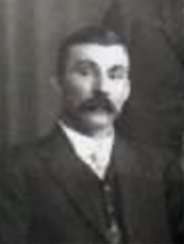Thomas Bath
Thomas Henry Bath, CBE (21 February 1875 – 6 November 1956) was an Australian politician, trade unionist, newspaper editor, writer, and cooperativist. A member of the Labor Party, he served as a Member of the Western Australian Legislative Assembly between 1902 and 1914 for the constituencies of Hannans, Brown Hill and Avon, and was also Minister for Education for a period of 79 days in 1905, and Leader of the Opposition between 1906 and 1910. In later life, Bath was involved in the establishment of the University of Western Australia, and also initiated several agricultural cooperatives.
Thomas Bath CBE | |
|---|---|
 | |
| Leader of the Opposition of Western Australia | |
| In office 27 October 1906 – 3 August 1910 | |
| Premier | Newton Moore |
| Preceded by | William Johnson |
| Succeeded by | John Scaddan |
| Minister for Education of Western Australia | |
| In office 7 June 1905 – 25 August 1905 | |
| Premier | Henry Daglish |
| Preceded by | Henry Daglish |
| Succeeded by | Walter Kingsmill |
| Member of the Western Australian Parliament for Hannans | |
| In office 1902–1904 | |
| Preceded by | John Reside |
| Succeeded by | Wallace Nelson |
| Member of the Western Australian Parliament for Brown Hill | |
| In office 1904–1911 | |
| Preceded by | Constituency established |
| Succeeded by | Constituency abolished |
| Member of the Western Australian Parliament for Avon | |
| In office 1911–1914 | |
| Preceded by | Constituency established |
| Succeeded by | Tom Harrison |
| Personal details | |
| Born | 21 February 1875 Hill End, New South Wales |
| Died | 6 November 1956 (aged 81) Mount Lawley, Western Australia, Australia |
| Political party | Labor Party |
Early life
Bath was born to Thomas Henry Richard Bath, a miner, and his wife Sarah Ann Bath (née Barrow), on 21 February 1875, at Hill End, New South Wales, a mining town in the Blue Mountains. He emigrated to the Western Australian Goldfields in 1896, and found work as a miner. The following year, after a brief sojourn in New South Wales, Bath was involved in founding the Amalgamated Workers' Association. In 1898, he was asked to head the local chapter of the Knights of Labor, a United-States-based labour organisation, which he represented at the 1899 trade union conference, held in Coolgardie. In September 1900, Bath, despite having no formal training in writing, became the first editor of the Westralian Worker, a socialist publication. In July of the following year, Bath gave way to Wallace Nelson.[1]
Political career
After being appointed secretary of the Kalgoorlie and Boulder Trades and Labor Council, Bath was involved in various faction-fighting between trade unions.
Later life
Bath was a leading member of the Freemasons in Western Australia, and was involved in the foundation of Lodge Bonnie Doon, 839, S.C., in 1897, under the Scottish Rite.[2] He was made a Commander of the Order of the British Empire in 1949, for "long service to the wheatgrowing industry of the state".[3] He died at his home in Mount Lawley on 6 November 1956 from a heart attack resulting from coronary occlusion.
Legacy
Bath Lane, one of the minor roads in the Ballarat CBD, was named after him.
References
| Wikimedia Commons has media related to Thomas Bath. |
- Gibbney, H. J. Bath, Thomas Henry (1875–1956) – Australian Dictionary of Biography. Retrieved 28 January 2012.
- Bath is included in a Montage of portraits of Western Australian Freemasons presented to J. M. F. Lapsley, Grand Master of Scottish Freemasonry in Western Australia, 19 Dec. 1911 (picture) – State Library of Western Australia. Retrieved 2 August 2012.
- Wheat Men Honoured. – The West Australian. Published Wednesday, 20 July 1949. Retrieved from Trove, 28 January 2012.
| Political offices | ||
|---|---|---|
| Preceded by Henry Daglish |
Minister for Education 1905 |
Succeeded by Walter Kingsmill |
| Preceded by William Johnson |
Leader of the Opposition 1906–1910 |
Succeeded by John Scaddan |
| Party political offices | ||
| Preceded by William Johnson |
Leader of the Labor Party in Western Australia 1906–1910 |
Succeeded by John Scaddan |
| Western Australian Legislative Assembly | ||
| Preceded by John Reside |
Member of Parliament for Hannans 1902–1904 |
Succeeded by Wallace Nelson |
| Constituency established | Member of Parliament for Brown Hill 1904–1911 |
Constituency abolished |
| Constituency established | Member of Parliament for Avon 1911–1914 |
Succeeded by Tom Harrison |